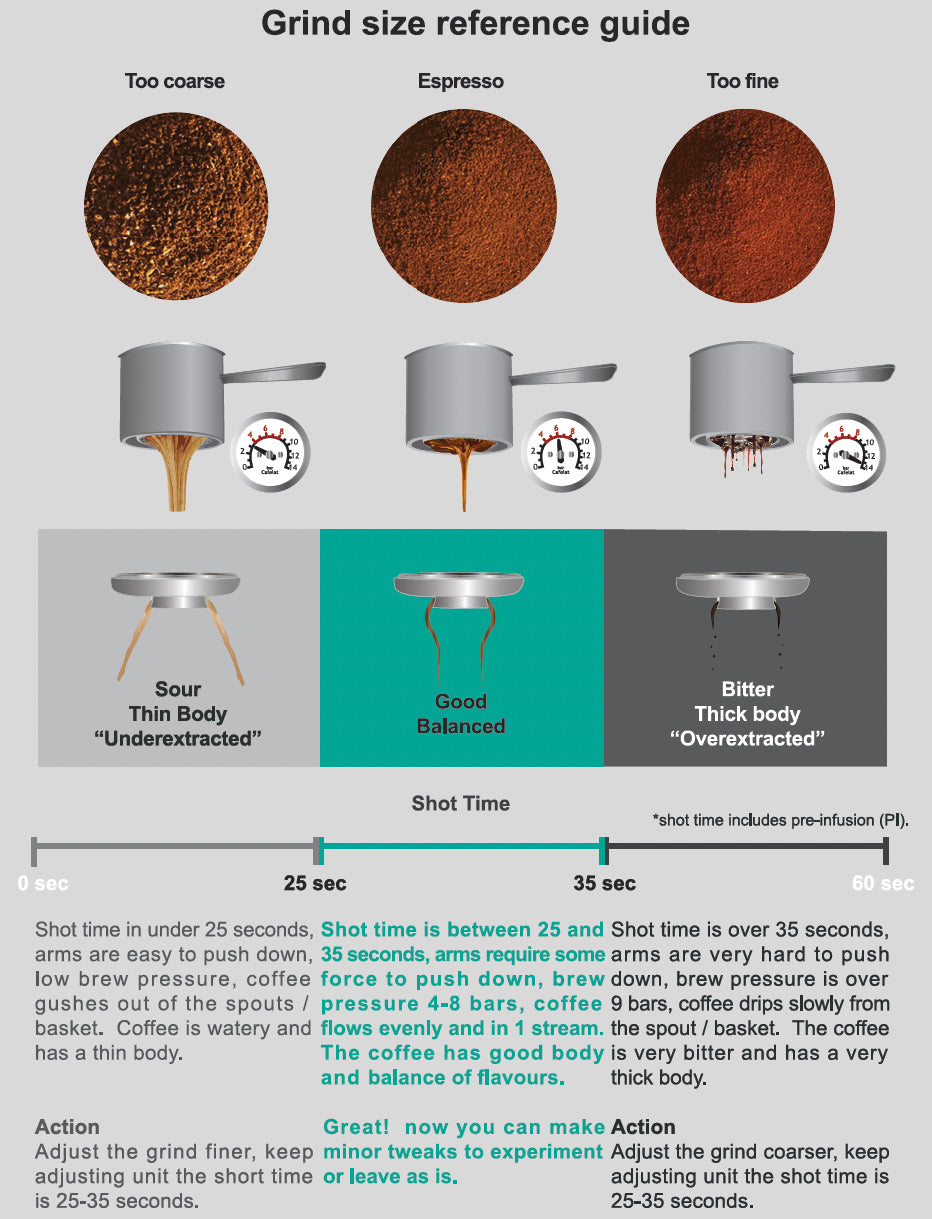How to Time Espresso Extraction
As a home barista, mastering the timing of espresso extraction can significantly enhance your coffee experience. The essence of a great espresso lies in the careful balance of timing, grind size, and extraction flow. Initially, this process may seem overwhelming, but once you understand its nuances, it transforms into a gratifying aspect of espresso brewing.
Why Timing Matters in Espresso Extraction
Timing your espresso extraction is vital for ensuring consistency and achieving the ideal flavor profile. It allows you to control the flavor extracted from the coffee grounds. If you extract too quickly, you'll end up with an under-extracted shot, resulting in a sour, sharp taste that lacks body. Conversely, an overly long extraction leads to bitterness and an unpleasant aftertaste, indicating over-extraction.

Two Methods to Time Your Espresso Extraction
Two common methods exist for timing espresso extraction: starting the timer when the pump activates or when the first drop of espresso hits the cup. Personally, I find it most effective to begin timing the moment you press the espresso button. This approach accounts for the pre-infusion time, ensuring greater consistency in your shots.
Ideal Extraction Time for Espresso
A general guideline for espresso extraction is between 25 and 35 seconds. In my experience, aiming for around 30 seconds tends to yield the best results. If your shot pulls in less than 25 seconds, it's likely under-extracted, resulting in a weak and sour flavor. On the flip side, if it exceeds 35 seconds, you're at risk of over-extraction, leading to a bitter shot.
Adjusting the Grind Size for Optimal Timing
Grind size greatly impacts the timing of espresso extraction. A finer grind slows the extraction, while a coarser grind speeds it up. For instance, if your shot pulls too quickly (under 25 seconds), your grind may be too coarse. Conversely, if it takes longer than 35 seconds, the grind is likely too fine. After several trials, I discovered the ideal grind setting for my espresso, which made a significant difference.
Evaluating Your Espresso: Timing Isn’t Everything
While timing is a crucial factor, it's not the only determinant of great espresso. Taste should ultimately guide your evaluation. I've learned to focus on flavor balance; a well-extracted shot should harmoniously blend sweetness, acidity, and body. If your espresso tastes sour and thin, it may be under-extracted, prompting a finer grind or an adjustment to your brew ratio. If it tastes bitter and dry, you’ve likely over-extracted, necessitating a coarser grind or shorter extraction time.
Troubleshooting Espresso Extraction Issues
Here are some effective troubleshooting tips for common espresso extraction issues:
- Under-extraction: If the shot pulls too fast (less than 25 seconds) and tastes sour or flat, it's usually due to a coarse grind. To resolve this, grind the coffee finer and try again.
- Over-extraction: If the shot takes too long (over 35 seconds) and tastes bitter with a dry finish, it indicates that the grind is too fine. Adjust by grinding coarser.
The Impact of Pre-Infusion on Extraction Timing
Pre-infusion significantly influences overall extraction timing. Many high-end espresso machines feature a pre-infusion setting, allowing water to rest on the coffee grounds before full pressure is applied. Including this pre-infusion time in your total extraction often leads to more consistent results. If your machine lacks an automatic pre-infusion feature, you can manually simulate it by briefly starting and stopping the pump.

Experimenting with Brew Ratios
Another variable affecting espresso extraction is the brew ratio, which is the relationship between coffee grounds and the liquid espresso produced. A common starting point is a 1:2 ratio, such as 18 grams of ground coffee yielding 36 grams of espresso. I've found that experimenting with this ratio, depending on the type of beans used, can reveal unique flavors.
For lighter roasts, a slightly longer extraction or a lower brew ratio (e.g., 1:2.5) can accentuate fruity, bright notes. For darker roasts, sticking closer to a 1:2 ratio minimizes bitterness while preserving a rich, full-bodied shot.
Conclusion
The most crucial aspect of espresso extraction is taste. While timing provides a framework, your palate ultimately determines the shot's quality. I’ve experienced perfectly timed shots that didn't taste right due to grind or brew ratio issues. By experimenting with these variables, I’ve honed my espresso-making process, consistently achieving delicious results. Mastering the art of espresso extraction takes patience and practice, but with a focus on timing, grind adjustments, and tasting the final product, you’ll soon be pulling perfect espressos every time.
